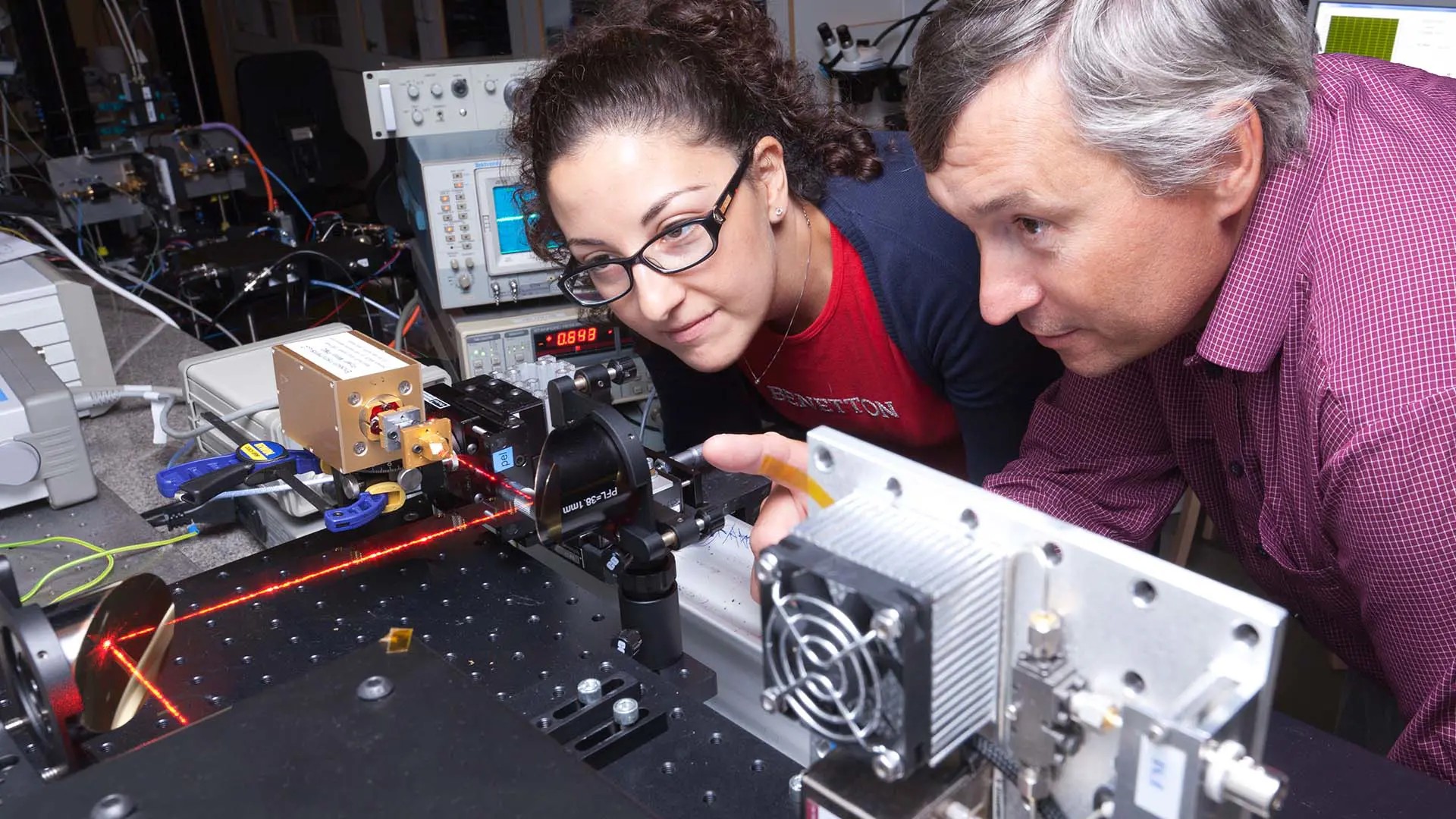
Detection of weak emission from molecules and atoms in the interstellar medium (the basis for star and planet formation), or from tiny concentrations of atmospheric pollutants require THz receivers with extreme sensitivity and large bandwidth. We study novel THz wave detection approaches in new materials and devices in an attempt to widen the horizon for future space science instrumentation.
Examples of such materials are ultrathin superconducting films of niobium nitride, magnesium diboride (MgB2), and chemically doped monolayers of graphene. Our NbN hot-electron bolometers (HEB) mixers were utilized at Herschel Space Observatory, and South Pole Telescope.
Advances with ultrathin superconducting MgB2 films open new horizons for THz astronomy since MgB2 HEB mixers exhibit 3-4 times larger bandwidth compared to alternative technologies and allow for operation at temperatures up to 20K.
